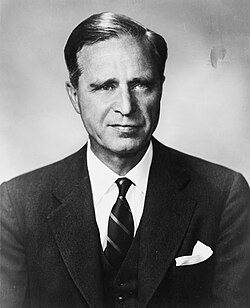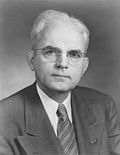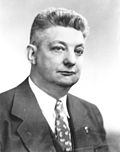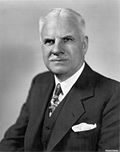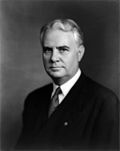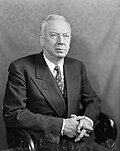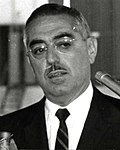| ||||||||||||||||||||||||||||||||||||||||
35 of the 96 seats in the United States Senate 49 seats needed for a majority | ||||||||||||||||||||||||||||||||||||||||
|---|---|---|---|---|---|---|---|---|---|---|---|---|---|---|---|---|---|---|---|---|---|---|---|---|---|---|---|---|---|---|---|---|---|---|---|---|---|---|---|---|
| ||||||||||||||||||||||||||||||||||||||||
 | ||||||||||||||||||||||||||||||||||||||||
| ||||||||||||||||||||||||||||||||||||||||
The 1952 United States Senate elections was an election for the United States Senate which coincided with the election of Dwight D. Eisenhower to the presidency by a large margin. The 32 Senate seats of Class 1 were contested in regular elections, and three special elections were held to fill vacancies. The Republicans took control of the Senate by managing to make a net gain of two seats. However, Wayne Morse (R-OR) became an independent forcing Republicans to rely on Vice President Richard Nixon's tie-breaking vote, although Republicans maintained a 48–47–1 plurality. Wayne Morse would caucus with the Republicans at the start of Congress’ second session on January 6, 1954, to allow the GOP to remain in control of the Senate. This was the third time, as well as second consecutive, in which a sitting Senate leader lost his seat.
Contents
- Results summary
- Gains, losses and holds
- Retirements
- Defeats
- Post-election changes
- Change in composition
- Before the elections
- Results of the elections
- Beginning of the next Congress
- Race summaries
- Special elections during the 82nd Congress
- Races leading to the 83rd Congress
- Closest races
- Arizona
- California
- Connecticut
- Connecticut (special)
- Connecticut (regular)
- Delaware
- Florida
- Indiana
- Kentucky (special)
- Maine
- Maryland
- Massachusetts
- Michigan
- Michigan (special)
- Michigan (regular)
- Minnesota
- Mississippi
- Missouri
- Montana
- Nebraska
- Nebraska (special)
- Nebraska (regular)
- Nevada
- New Jersey
- New Mexico
- New York
- North Dakota
- Ohio
- Pennsylvania
- Rhode Island
- Tennessee
- Texas
- Utah
- Vermont
- Virginia
- Washington
- West Virginia
- Wisconsin
- Wyoming
- See also
- Notes
- References
- Sources
The 1952 United States Senate elections marked a significant shift in power, with the Republicans gaining control of the Senate by making a net gain of two seats.
This was the last time the Senate changed hands in a presidential election year until 1980 and the last time the Republicans won control of the Senate until 1980. As of 2024, this is the last time both houses simultaneously changed hands in a presidential year. [1]








